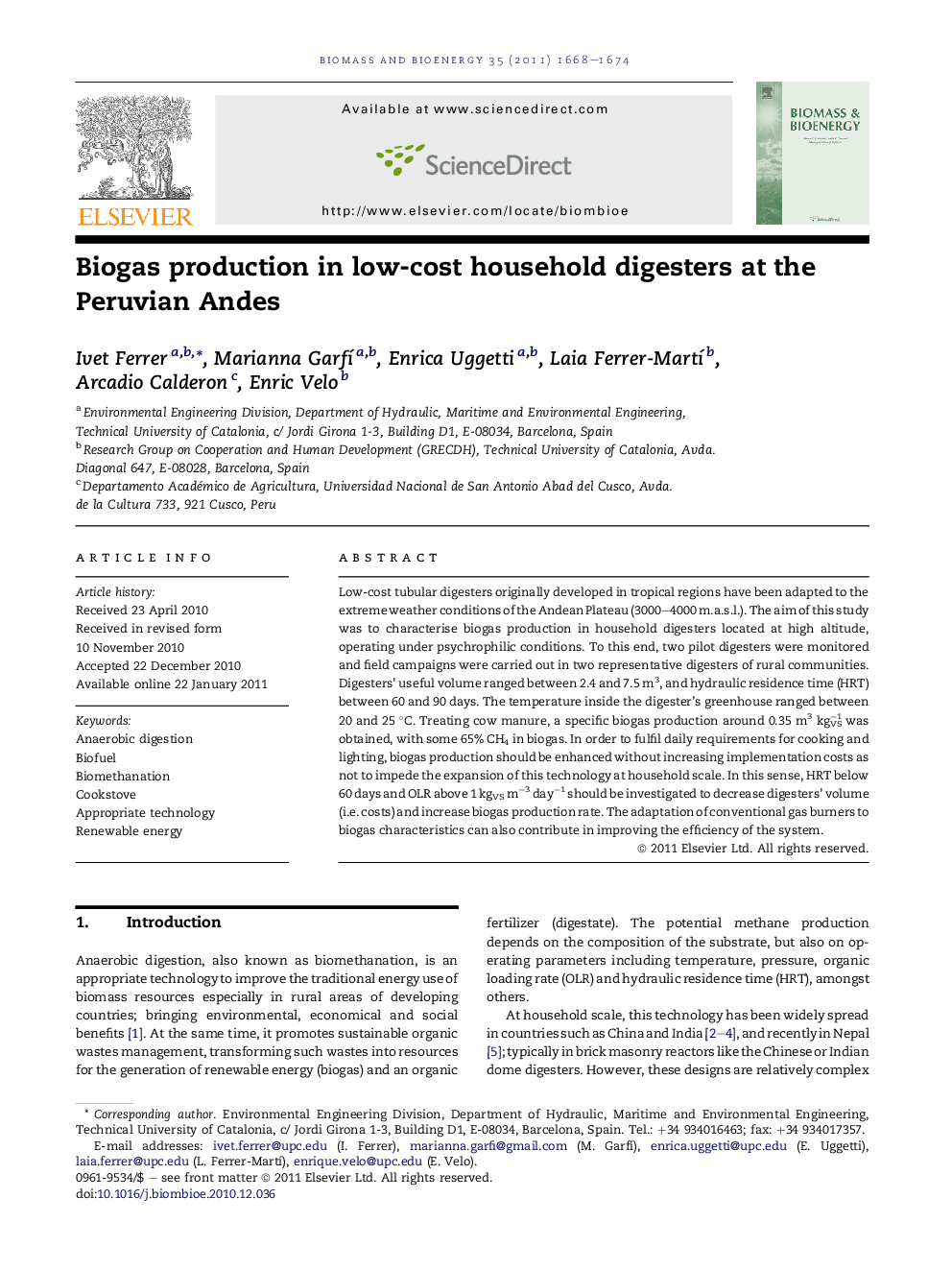| Article ID | Journal | Published Year | Pages | File Type |
|---|---|---|---|---|
| 677708 | Biomass and Bioenergy | 2011 | 7 Pages |
Low-cost tubular digesters originally developed in tropical regions have been adapted to the extreme weather conditions of the Andean Plateau (3000–4000 m.a.s.l.). The aim of this study was to characterise biogas production in household digesters located at high altitude, operating under psychrophilic conditions. To this end, two pilot digesters were monitored and field campaigns were carried out in two representative digesters of rural communities. Digesters’ useful volume ranged between 2.4 and 7.5 m3, and hydraulic residence time (HRT) between 60 and 90 days. The temperature inside the digester’s greenhouse ranged between 20 and 25 °C. Treating cow manure, a specific biogas production around 0.35 m3 kgVS−1 was obtained, with some 65% CH4 in biogas. In order to fulfil daily requirements for cooking and lighting, biogas production should be enhanced without increasing implementation costs as not to impede the expansion of this technology at household scale. In this sense, HRT below 60 days and OLR above 1 kgVS m−3 day−1 should be investigated to decrease digesters’ volume (i.e. costs) and increase biogas production rate. The adaptation of conventional gas burners to biogas characteristics can also contribute in improving the efficiency of the system.
► We characterised biogas production in low-cost household digesters at high altitude. ► Specific biogas production around 0.35 m3 kgVS−1, with some 65% CH4 in biogas. ► Conventional burners' efficiency cooking with biogas around 50%. ► HRT <60 days and OLR >1 kgVS m−3 day−1 should be investigated to enhance the process. ► Adaptation of conventional gas burners to biogas is recommended.
